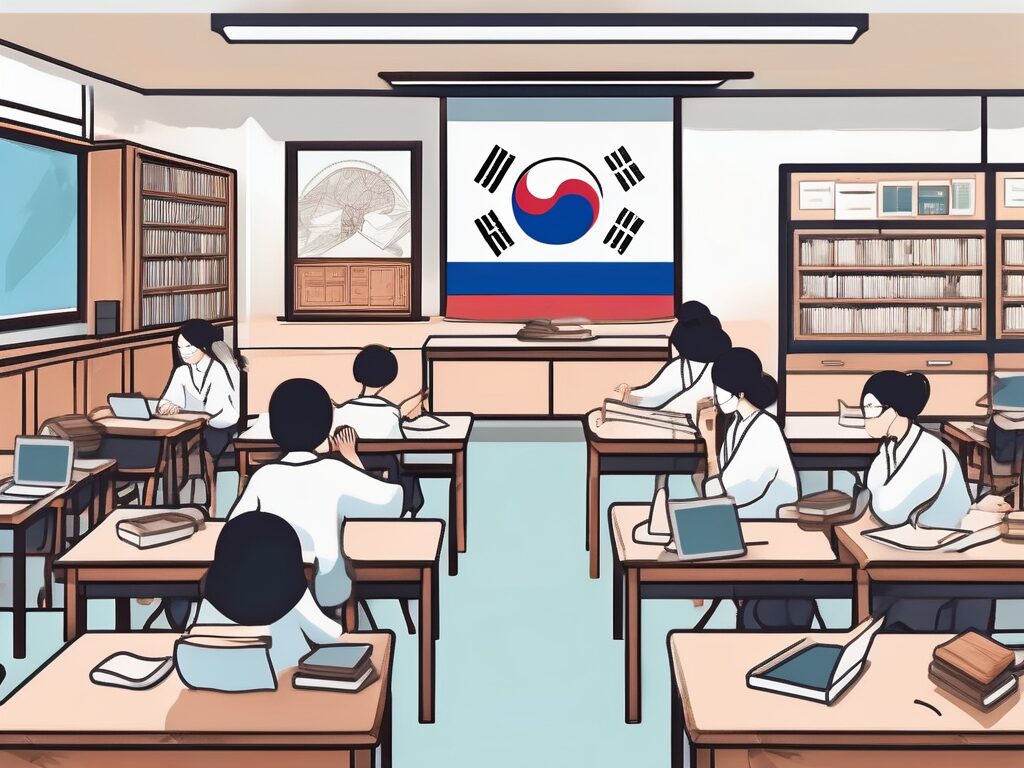South Korea, often referred to as the ‘Land of the Morning Calm’, is globally recognised for its high educational standards and impressive student performance. The country’s education system has been a subject of fascination for many educators worldwide, particularly due to its effective student engagement techniques. This article delves into the unique approaches adopted in South Korea to keep students engaged and motivated in their learning journey.
The Importance of Student Engagement
Before we delve into the specific techniques used in South Korea, it’s crucial to understand why student engagement is so important. Engagement is the key to effective learning. When students are actively engaged, they are more likely to absorb and retain information. It’s akin to immersing a sponge in water; the more engaged the student, the more knowledge they soak up.
Furthermore, engaged students are more likely to develop a love for learning, which can lead to lifelong educational pursuits. This is similar to instilling a love for a sport in a child; once the passion is ignited, it often continues to burn brightly throughout their life.
South Korean Techniques for Student Engagement
South Korea’s education system has a few unique techniques that have proven effective in engaging students. These techniques range from the traditional to the innovative, and they all contribute to the country’s high educational performance.
Emphasis on Group Work
One of the most common techniques used in South Korean classrooms is group work. Students are often assigned tasks to complete in small groups, encouraging collaboration and communication. This is akin to a football team working together to score a goal; each player has a role to play, and success is achieved through teamwork.
Group work not only helps students understand the material better by discussing and debating it with their peers, but it also fosters a sense of community and belonging. This can significantly increase student engagement and motivation.
Use of Technology
South Korea is one of the most technologically advanced countries in the world, and this extends to their education system. Many classrooms are equipped with the latest technology, including smartboards and tablets, which are used to make lessons more interactive and engaging.
Imagine a history lesson where students can virtually visit the sites they are studying, or a science lesson where they can conduct experiments in a virtual lab. This kind of immersive learning can significantly boost student engagement, making lessons more exciting and memorable.
Regular Feedback
Another technique used in South Korean classrooms is regular feedback. Teachers frequently provide students with constructive feedback on their work, helping them understand where they are excelling and where they need to improve.
This feedback is not just one-way; students are also encouraged to give feedback to their teachers and peers. This open communication helps create a supportive learning environment where students feel valued and heard, much like a healthy conversation where both parties listen and learn from each other.
Challenges and Solutions
While South Korea’s education system is highly effective, it is not without its challenges. One of the main issues is the high pressure and competition, which can lead to stress and burnout among students. However, the country has been taking steps to address this issue.
Reducing Pressure
One of the ways South Korea is trying to reduce pressure on students is by implementing policies that limit study hours and encourage more balanced lifestyles. This is similar to a company implementing work-life balance policies to prevent employee burnout.
These policies aim to ensure that students have time for rest and recreation, in addition to their studies. This can help maintain student engagement by preventing burnout and promoting a more positive attitude towards learning.
Encouraging Creativity and Critical Thinking
Another challenge is the traditional focus on rote learning, which can hinder creativity and critical thinking. To address this, South Korea is increasingly incorporating project-based learning and other methods that encourage these skills.
Imagine a classroom where students are not just memorising facts, but are actively involved in projects that require them to think creatively and critically. This kind of learning can be more engaging and enjoyable for students, leading to a deeper understanding of the material.
Conclusion
In conclusion, South Korea’s education system offers valuable insights into effective student engagement techniques. From group work and technology use to regular feedback and policies to reduce pressure, these methods can be adapted and implemented in classrooms worldwide to enhance student engagement and learning outcomes.
While there are challenges to overcome, South Korea’s commitment to improving its education system and fostering a love for learning among its students is truly inspiring. It serves as a reminder that student engagement is not a one-size-fits-all concept, but a dynamic process that requires constant adaptation and innovation.
Elevate Your Teaching Career with IPGCE
As you reflect on the innovative student engagement techniques of South Korea, consider the opportunity to enhance your own teaching credentials with IPGCE. Embrace the chance to overcome the barriers of stringent qualification requirements and limited career progression. Join a global network of educators, deepen your understanding of international curricula, and advance your professional development while maintaining your current commitments. Take the first step towards a more fulfilling teaching career and become part of the UK’s #1 Teacher Training Course. Join now and unlock your potential as an educator on the international stage.

